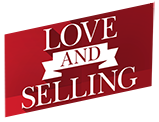Dan Smaida – Wednesday, January 04, 2017
A short time ago, the senior leadership team of one of my clients got together and processed McKinsey’s Ten Timeless Tests of Strategy (a recommended read for anyone in a strategy development role). While tests are focused on overall business strategy, there’s a strong application for sales leaders as you look to next year and beyond.
WARNING! Too much strategizing is a trap! Beware of paralysis by analysis, too many spreadsheets, and consultants bearing complex tools! All you really need is a goal, a couple of org charts, a Gantt chart, and a value hypothesis.
So with apologies to the good folks at McKinsey, who are much smarter than I, here are the five tests that most directly apply to relationship sales, with a dose of advice on how to apply these tests to your world.
Does your strategy beat the market?
What it means: “The market” is everything – direct competitors, indirect competitors, competing priorities, and (often overlooked) the status quo. Your value hypothesis needs to include WHY you beat each element of your market.
What to do: Focus on how you win against the whole market, not just direct competitors. Get really granular about your competition – avoid the temptation to generalize, instead opting toward “categories of one” as a default. For extra credit, project this thinking to potential competition you haven’t encountered yet. When you think “competitive advantage,” are you focused on the right competition? Which leads to…
Does your strategy tap a true source of competitive advantage?
What it means: A true source of competitive advantage is one that your customers agree a) Provides real, sustainable business results, and b) leverages your unique mix of capabilities. .
What to do: Examine your strategy versus every one of the competitors you’re likely to encounter in the sale. Think about the uniqueness in what, how, when, where, and why you deliver value. Where you can use superlatives (first, best, most, only, etc.) that are facts, and not just marketing? And what are you doing to reinforce, grow, sustain, and protect that advantage? For extra credit, validate your competitive advantage with your customers!
Have you translated your strategy into an action plan?
What it means: For sellers in a relationship sale of any complexity, an action plan is essential. In fact, failure to translate strategy to action means you wasted your time strategizing! Your goal is to translate your objectives into a set of simple “Who Does What When, and Why” statements – organized, sequenced, and calendared.
What to do: Work with your team to develop an action plan (using your Gantt chart and org charts) that taps our true competitive advantage and uses the HIGHEST-TRUST resources to execute. For extra credit, use sound project management best practices to make phases, tasks, owners, budget, and risk visible in your plan.
Is your strategy granular about where to compete?
What it means: In complex (and especially enterprise-level) sales, it’s a fallacy to think you can – or should – win everyone over. Instead, great sellers pick their spots and focus on the hearts and minds they CAN win, while not wasting calories on selling to people who aren’t buying.
What to do: For the market, be relentless about segmenting and qualifying – opt for “segments of one” and be ruthless about your chances. Don’t rely on seller optimism or pessimism – use data and voice of the customer wherever possible. Within opportunities, use your org chart and a simple priorities list for each player to create a picture of your buying organism. Count your votes, both yes/no and undecided/unknown. Then focus your strategy and action plan on how to win where you CAN win.
Does your strategy embrace uncertainty?
What it means: So much is out of your control in selling, it makes sense to strategize for a range of unlikely, but possible scenarios. Embracing uncertainly means things like contingency planning and creating multiple options. Unfortunately, as Nassim Talem points out in The Black Swan, it’s the things you can’t plan for that kill you.
What to do: You can’t solve for Black Swans, but you can reduce the number of them by expanding your view. Work with people outside your sale to objectively consider the improbable events that could derail your plan. What could happen, and how do you prepare or hedge? For extra credit, engage your customers in this dialogue!
Developing sound sales strategy resembles developing a product – you’ve got to iterate, and testing is essential. Apply these tests of sales strategy (and read the HBR article for more!), and head into 2017 with a stronger strategy to win.
Dan Smaida is the author of Love and Selling and CEO of Real Relationship Selling, a consultancy focused on helping sellers differentiate and win in relationship sales.

